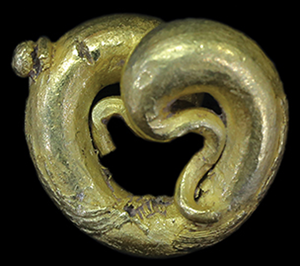Crossref Citations
This article has been cited by the following publications. This list is generated based on data provided by
Crossref.
Dussubieux, Laure
Bellina, Bérénice
Oo, Win Hsan
Win, U Maung Sun
Tut, Htet Myet
Htwe, Kalayar Myat Myat
and
Kyaw, Khinsandar
2020.
First elemental analysis of glass from Southern Myanmar: replacing the region in the early Maritime Silk Road.
Archaeological and Anthropological Sciences,
Vol. 12,
Issue. 7,
Alam, Ornob
Gutaker, Rafal M
Wu, Cheng-Chieh
Hicks, Karen A
Bocinsky, Kyle
Castillo, Cristina Cobo
Acabado, Stephen
Fuller, Dorian
d’Alpoim Guedes, Jade A
Hsing, Yue-Ie
Purugganan, Michael D
and
Sork, Victoria
2021.
Genome Analysis Traces Regional Dispersal of Rice in Taiwan and Southeast Asia.
Molecular Biology and Evolution,
Vol. 38,
Issue. 11,
p.
4832.
Calo, Ambra
Moffat, Ian
Bulbeck, David
Dupoizat, Marie France
Simyrdanis, Kleanthis
Walker, Chester P.
Bawono, Rochtri Agung
and
Prasetyo, Bagyo
2022.
Reconstruction of the late first millennium AD harbor site of Sembiran and analysis of its tradeware.
The Journal of Island and Coastal Archaeology,
Vol. 17,
Issue. 1,
p.
152.
Castillo, Cristina Cobo
Fahy, Brian
and
Fuller, Dorian Q.
2022.
Star anise from a fifteenth century Indonesian shipwreck.
Archaeology in Oceania,
Vol. 57,
Issue. 3,
p.
214.
Abraham, Shinu Anna
2023.
Recent Developments in the Archaeology of Long-Distance Connections Across the Ancient Indian Ocean.
Annual Review of Anthropology,
Vol. 52,
Issue. 1,
p.
115.
Leipe, Christian
Lu, Jou-chun
Chi, Ko-an
Lee, Shu-min
Yang, Hung-cheng
and
Wagner, Mayke
2023.
Archaeobotanical evidence of plant cultivation from the Sanbaopi site in south-western Taiwan during the Late Neolithic and Metal Age.
The Holocene,
Vol. 33,
Issue. 2,
p.
131.
Handini, Retno
Noerwidi, Sofwan
Sofian, Harry Octavianus
Fauzi, M. Ruly
Prasetyo, Unggul
Geria, I Made
Ririmasse, Marlon
Nasution, Devi Ayu Aurora
Rahayuni, Restu Ambar
and
Simanjuntak, Truman
2023.
New evidence on the early human occupation in Sumba Islands.
L'Anthropologie,
Vol. 127,
Issue. 3,
p.
103152.
Leipe, Christian
Lu, Jou-chun
and
Chi, Ko-an
2023.
Population dynamics in Taiwan from the Neolithic to early historic periods (5000–100 cal BP): Linking cultural developments and environmental change.
Archaeological Research in Asia,
Vol. 36,
Issue. ,
p.
100482.
Soedewo , Ery
Bakar , Abu
Intan, M. Fadhlan S.
Purnawibowo, Stanov
Restiyadi , Andri
Setiawan , Taufiqurrahman
Satria, Deddy
Anas, Aswandi
Sofian, Harry Octavianus
Hendrawan , Mochammad Fauzi
Tobing, Lolita R. L.
Oetomo, Repelita Wahyu
and
Adhityatama , Shinatria
2024.
History of the west coast of North Sumatra before Barus: Preliminary results of archaeological research at the Bongal settlement site.
Archipel,
Vol. 107,
Issue. ,
p.
17.
Hung, Hsiao-chun
2024.
Encyclopedia of Archaeology (Second Edition).
p.
1.
Shaikh, Zeeshan A.
Tripati, Sila
Shinde, Vasant
and
Blue, Lucy
2024.
Maritime and Underwater Archaeology in India: A Critical Appraisal and a Future Prospect.
Journal of Maritime Archaeology,
Vol. 19,
Issue. 2,
p.
151.
Hoppál, Krisztina
Bellina, Bérénice
and
Dussubieux, Laure
2024.
Southeast Asia and the Mediterranean World at the Turn of the First Millenniumce: Networks, Commodities and Cultural Reception.
Cambridge Archaeological Journal,
Vol. 34,
Issue. 2,
p.
291.
